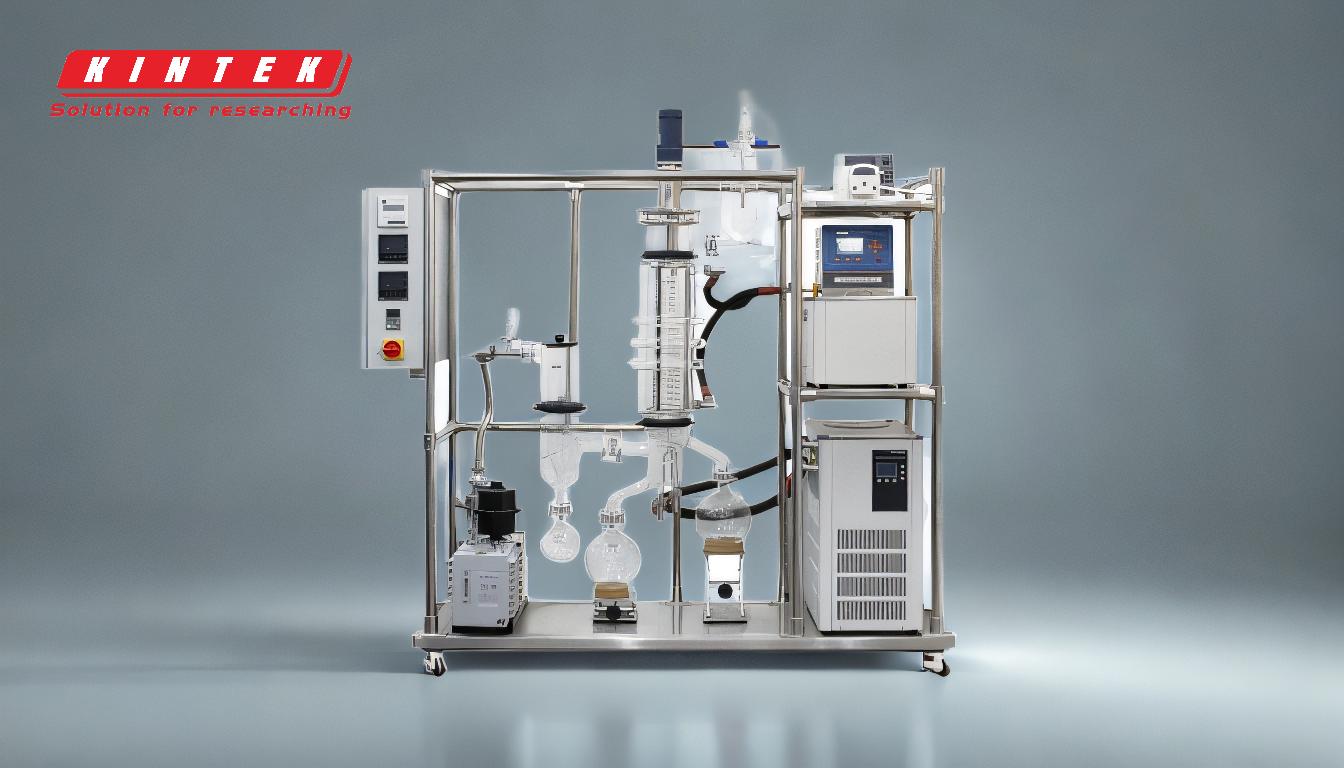Molecular distillation is a specialized separation technique used to purify thermally sensitive and high-boiling-point compounds by exploiting differences in the mean free path of molecules. It operates under high vacuum conditions, reducing the boiling point of substances and minimizing thermal degradation. The process involves heating a liquid mixture on a surface, causing molecules to evaporate and travel to a condenser placed at a distance less than their mean free path. Light molecules with longer mean free paths condense on the cooler surface, while heavier molecules return to the liquid phase. This separation is governed by thermodynamic principles, specifically the formula for mean free path, which depends on temperature, pressure, and molecular diameter. The technique ensures minimal contact time and low operating temperatures, making it ideal for delicate compounds.
Key Points Explained:

-
Principle of Molecular Distillation:
- Molecular distillation relies on the difference in the mean free path of molecules, which is the average distance a molecule travels before colliding with another molecule.
- The formula for mean free path is:
[ L = \frac{0.707K \cdot T}{\pi d^2 P} ]
Where:- (L) = mean free path
- (K) = Boltzmann constant
- (T) = temperature
- (d) = effective molecular diameter
- (P) = pressure
- Light molecules have a longer mean free path compared to heavy molecules, enabling their separation.
-
High Vacuum Conditions:
- Molecular distillation operates under high vacuum, which reduces the boiling point of substances and minimizes thermal degradation.
- The vacuum increases the mean free path of molecules, allowing them to travel without colliding with other molecules.
- This ensures that thermally unstable compounds are processed without decomposition.
-
Separation Mechanism:
- The liquid mixture is heated on a surface, causing molecules to evaporate.
- A condenser is placed at a distance less than the mean free path of light molecules but greater than that of heavy molecules.
- Light molecules travel to the condenser and condense, while heavy molecules return to the liquid phase.
- This separation is based on the ability of molecules to escape and condense without intermolecular collisions.
-
Minimized Contact Time and Low Temperatures:
- The process uses short residence times in the heating zone, reducing the risk of thermal degradation.
- Low operating temperatures are maintained due to the high vacuum, making it suitable for heat-sensitive compounds.
-
Applications and Advantages:
- Molecular distillation is ideal for purifying thermally unstable molecules, such as vitamins, essential oils, and high-boiling-point compounds.
- It ensures high purity and minimal degradation, making it a preferred method for sensitive materials.
-
Equipment Design:
- The system includes a heated surface, a pivoting scrubber to spread the material, and a condenser placed at an optimal distance.
- The design ensures efficient separation by controlling the distance between the evaporation and condensation surfaces.
By understanding these key points, a purchaser of molecular distillation equipment can evaluate its suitability for specific applications, ensuring optimal performance and product quality.
Summary Table:
| Key Aspect | Description |
|---|---|
| Principle | Relies on differences in mean free path of molecules for separation. |
| High Vacuum | Reduces boiling points and minimizes thermal degradation. |
| Separation Mechanism | Light molecules condense on a cooler surface; heavy molecules return to liquid. |
| Low Temperatures | Ensures minimal thermal degradation of sensitive compounds. |
| Applications | Ideal for vitamins, essential oils, and high-boiling-point compounds. |
| Equipment Design | Includes heated surface, pivoting scrubber, and optimally placed condenser. |
Ready to enhance your purification process? Contact us today to find the perfect molecular distillation solution!









